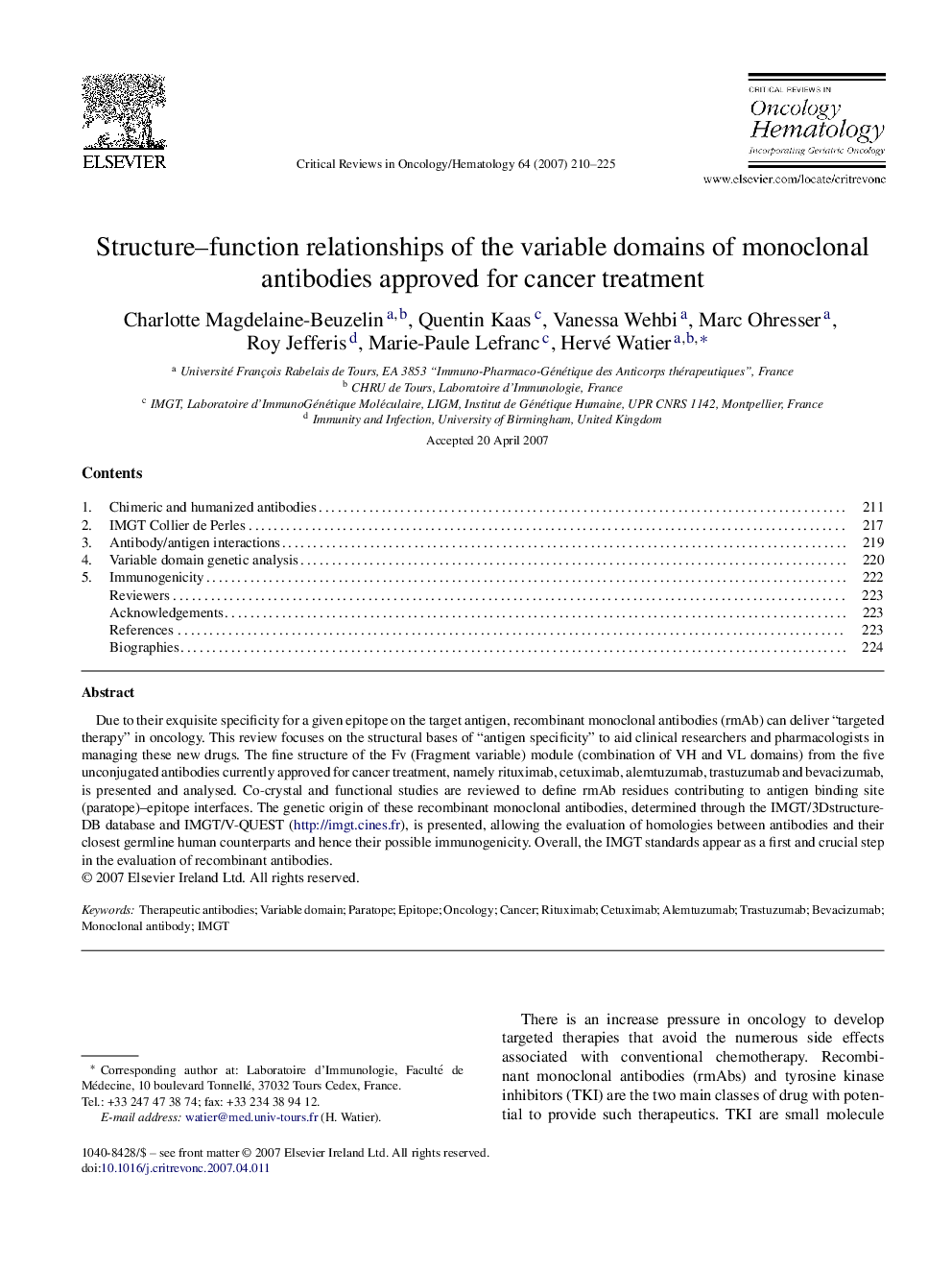| Article ID | Journal | Published Year | Pages | File Type |
|---|---|---|---|---|
| 3330056 | Critical Reviews in Oncology/Hematology | 2007 | 16 Pages |
Due to their exquisite specificity for a given epitope on the target antigen, recombinant monoclonal antibodies (rmAb) can deliver “targeted therapy” in oncology. This review focuses on the structural bases of “antigen specificity” to aid clinical researchers and pharmacologists in managing these new drugs. The fine structure of the Fv (Fragment variable) module (combination of VH and VL domains) from the five unconjugated antibodies currently approved for cancer treatment, namely rituximab, cetuximab, alemtuzumab, trastuzumab and bevacizumab, is presented and analysed. Co-crystal and functional studies are reviewed to define rmAb residues contributing to antigen binding site (paratope)–epitope interfaces. The genetic origin of these recombinant monoclonal antibodies, determined through the IMGT/3Dstructure-DB database and IMGT/V-QUEST (http://imgt.cines.fr), is presented, allowing the evaluation of homologies between antibodies and their closest germline human counterparts and hence their possible immunogenicity. Overall, the IMGT standards appear as a first and crucial step in the evaluation of recombinant antibodies.
